Here’s How to See a Unique Comet This Week: Bright Space Rock Visible Without a Telescope for the First Time in 80,000 YEARS — and You Don’t Want to Miss It
The last time the first humans left Africa was 80,000 years ago that they saw this.
Now comet C/2023 A3 – also known as Tsuchinshan-ATLAS – is finally making its return journey to Earth.
The comet, which appears as a faint star-like blob with a fuzzy tail, is likely to be visible just before sunrise on four consecutive mornings, Friday through Monday.
Comet C/2023 A3 was only discovered early last year, but based on its orbit, scientists estimate it last passed by Earth 80,000 years ago.
NASA astronaut Matthew Dominick, currently aboard the International Space Station, posted a stunning clip of the comet from his unique vantage point.
You can see the comet later this week by looking at the moon, which is in its waning crescent phase. The comet’s position will vary in relation to the moon, depending on the date
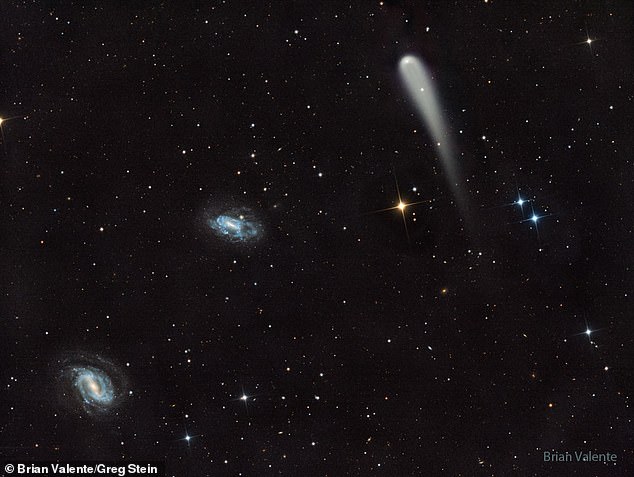
The comet, unseen by humans for 80,000 years, is described as “a fuzzy star with a misty tail.” It is pictured here (above right) in this stunning image, posted Monday as NASA’s “Astronomy Picture of the Day.”
The eight-second time-lapse video clip shows the celestial body from the space station’s dome windows.
“This comet is going to make for some really cool images as it gets closer to the sun,” Dominick said in his X-message.
Stuart Atkinson, a space enthusiast and amateur astronomer from Cumbria, said the comet will look like ‘a faint star with a misty tail’.
“It will be under the moon, very low in the east,” he said in a X-message.
Although it can be seen with the naked eye in both hemispheres, it wouldn’t hurt to have a pair of binoculars on hand to magnify the view.
According to The air is aliveComet C/2023 A3 will be at a distance of 253.6 million kilometres from Earth at 12:00 BST on Tuesday.
It is getting closer and closer, moving at about 70 km per second (150,000 miles per hour).
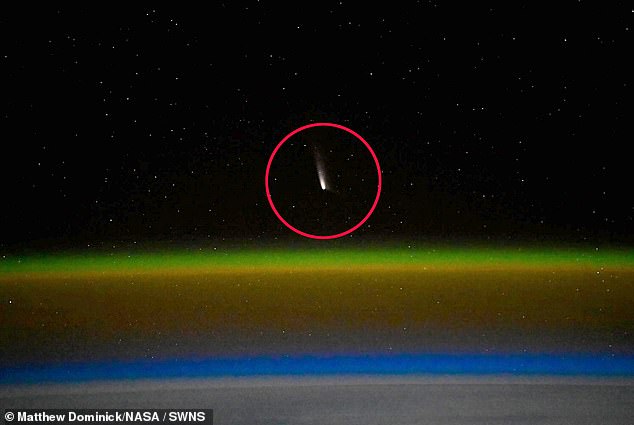
NASA astronaut Matthew Dominick, currently aboard the International Space Station, posted a stunning clip of the comet from his unique vantage point
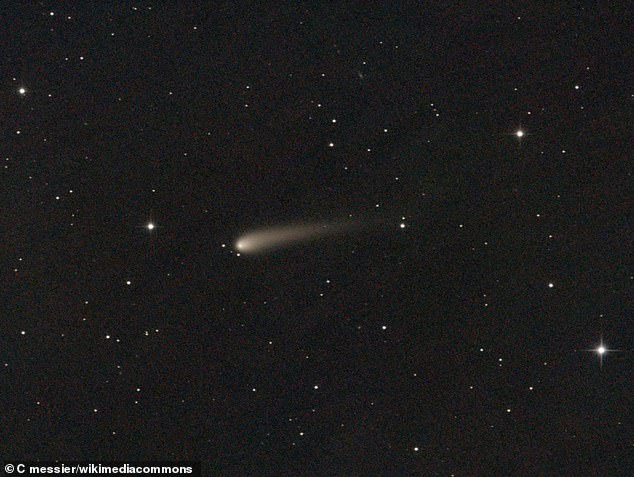
C/2023 A3 was first documented by telescopes in South Africa, Chile and Hawaii only last year as it came closer and closer to Earth
On Friday, September 27, the Moon will reach perihelion, the point at which it comes closest to the Sun in its 80,000-year orbit.
Perihelion is the moment when a comet is at its brightest and therefore most visible to Earthlings.
The comet will also be visible on Saturday, Sunday and Monday mornings, although its position relative to the Moon will change slightly.
The best time to see it on these days is about 40 minutes before sunrise, when it is not yet eclipsed by the sun.
In the UK, that’s 40 minutes before sunrise, around 06:15 BST. This means some commuters will get a chance to see it before they leave for work.
Minjae Kim, a space expert at the University of Warwick’s astronomy department, told MailOnline: ‘The comet will be visible as a pre-dawn object. You can see it very low in the east before sunrise.
‘C/2023 A3 has an orbital period of about 80,000 years and is therefore considered a long-orbital comet.
‘This means that its behaviour and appearance could be unpredictable, with possible changes in brightness and tail development as it approaches the Sun.
‘If the predictions are correct, it could be visible to the naked eye, appearing as a fuzzy star with a tail stretching across the sky.
‘Otherwise, binoculars or a small telescope could reveal more details in the comet’s structure and tail.’
For those who missed it this weekend, Dr. Kim said the comet should be visible again between October 10th and October 20th.
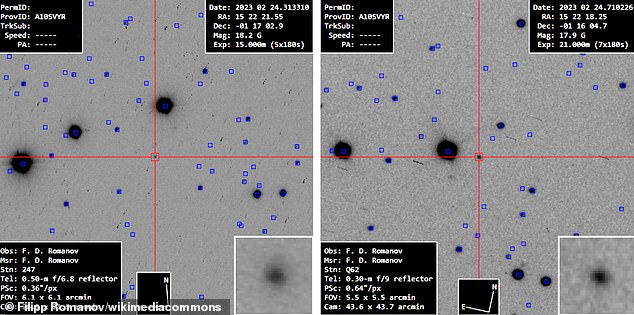
Images of comet C/2023 A3 (Tsuchinshan–ATLAS) obtained on 2023-02-24 by amateur astronomer using distant telescopes
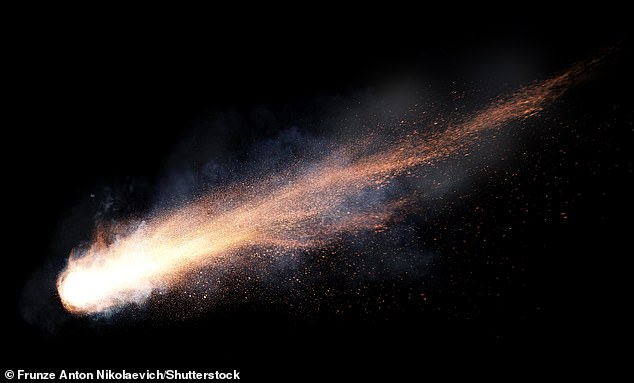
Comets are large objects of dust and ice that orbit the sun. NASA describes them as “leftovers” from the formation of the solar system 4.6 billion years ago (artist’s rendering)
Comets, also called “dirty snowballs” by astronomers, are balls of ice, dust and rock that typically originate in the ring of icy material called the Oort Cloud at the outer edge of our solar system.
A comet has a thin, gaseous atmosphere filled with ice and dust, called a coma.
As comets approach the Sun, they melt and release a stream of gas and dust. This stream is blown off their surfaces by solar radiation and plasma, forming a cloud-like, outward-facing tail.
Comets move toward the inner solar system as they are released from the Oort cloud by different gravitational forces, and they become more visible as they approach the warmth of the sun.
Fewer than a dozen comets are discovered each year by observatories around the world.
Starwalk, an astronomical stargazing app, describes Comet C/2023 A3 as “the most anticipated comet of the year.”
In late November, another comet, 333P/LINEAR, should be visible with large binoculars or a small telescope.
But its orbital period is only eight years – paltry compared to Comet C/2023 A3, which is truly a once-in-a-lifetime sight.
